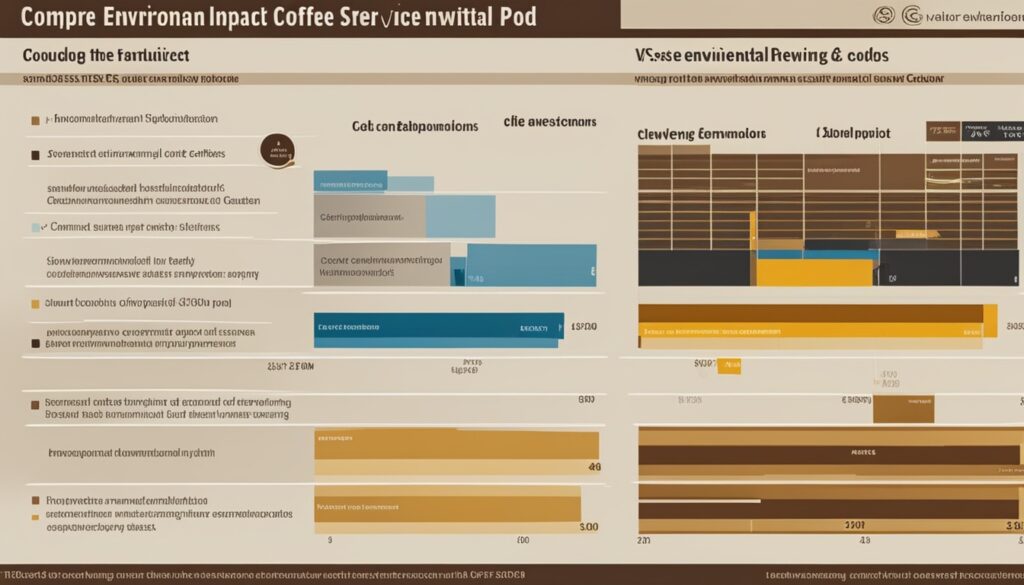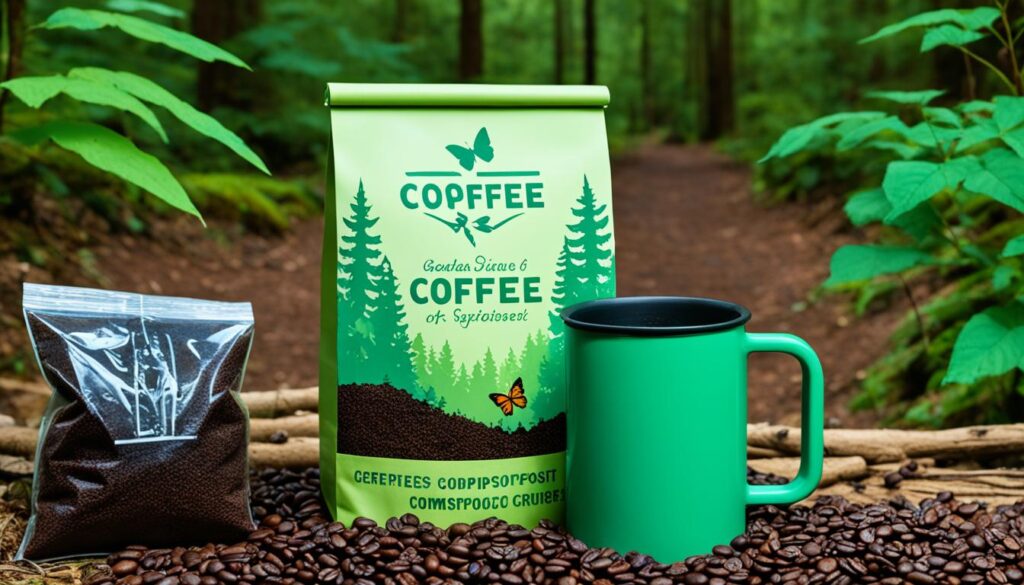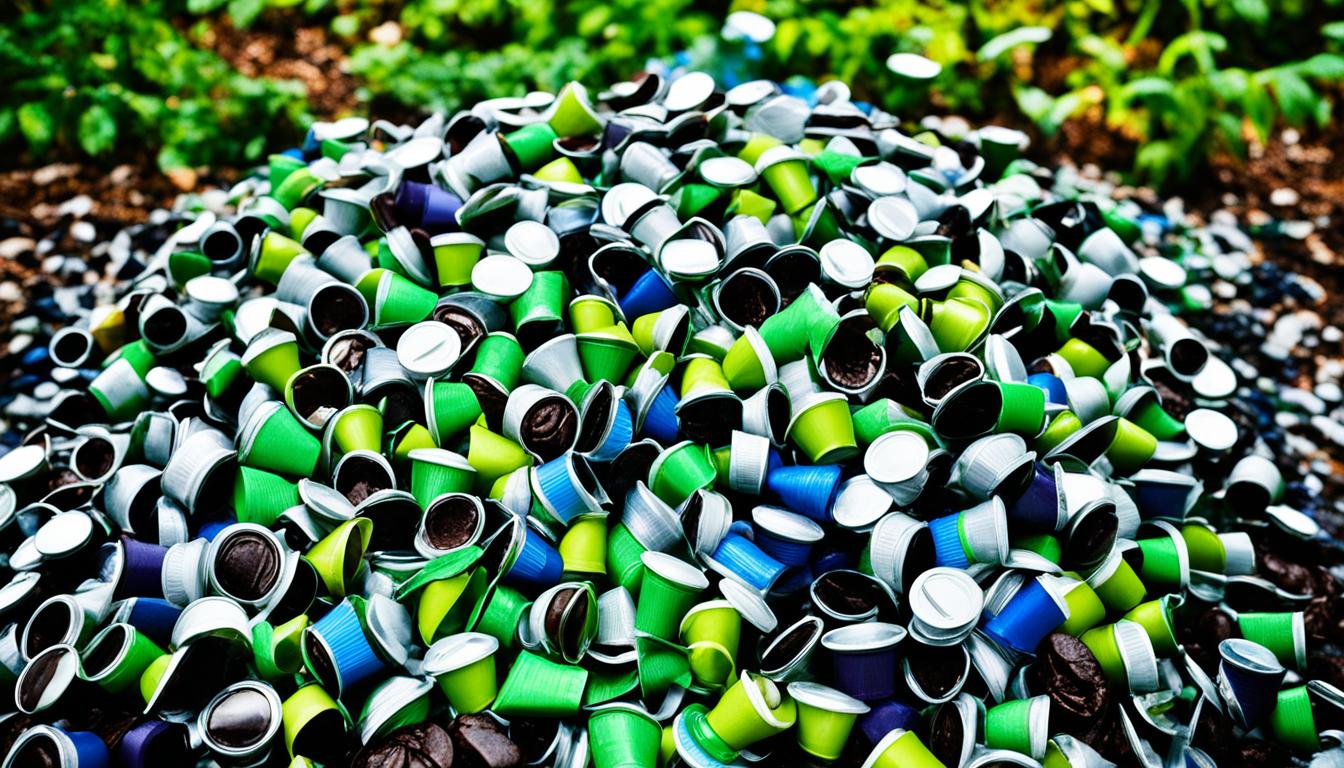Every 60 seconds, 39,000 coffee pods are produced globally. Surprisingly, 29,000 of them are disposed of in landfills. This statistic highlights the substantial environmental consequences of single-serve coffee pods. While they have gained popularity due to their convenience, the issues surrounding waste and sustainability are undeniably important.
The increase in single-serve coffee machines from 1.8 million in 2008 to over 20 million in 2018 is notable. Brands like Keurig Dr Pepper and Nespresso lead with their plastic and aluminum pods. These pods put a strain on our natural resources and add to emissions. It’s important for coffee lovers to look into more eco-friendly options to lessen these effects.
Key Takeaways
- Single-serve coffee pods generate significant waste and greenhouse gas emissions.
- Over 40% of households in the U.S. own espresso pod machines, reflecting their rising popularity.
- The recycling process for many coffee pods is complex and often unfeasible.
- Eco-friendly alternatives, such as reusable or compostable pods, present sustainable options for consumers.
- Educating users about waste reduction and supporting sustainable brands can drive positive change in the coffee industry.
The Rise of Single-Serve Coffee Pods
Coffee pods have changed how people drink coffee. Brands like Keurig and Nespresso are now big names. They offer quick coffee making without the usual coffee-making mess. Many people now prefer these single-serve systems. They fit perfectly into busy lifestyles.
Popularity among Consumers
About 80% of users love the fast and simple way these machines work. They choose them over old-style coffee brewing. Coffee pod sales have been climbing for years. They grow by about 10% every year. Now, coffee pods make up about 30% of the coffee market. This marks a big move towards single-serve coffee.
Convenience versus Environmental Responsibility
The rise of coffee pods has sparked a debate on their environmental impact. These pods make up a lot of trash, challenging our waste management systems. In Brazil, only 11% of these pods got recycled in 2017. The waste issue has led some places, like Hamburg in Germany, to ban coffee pods.
Some experts say coffee pods might reduce carbon footprints by using less coffee and water. Still, the issue of sustainability is big for many people. There’s a growing demand for eco-friendly coffee pods. More people are thinking about their choices. They weigh the ease of use against the impact on the planet.

The Environmental Impact of Single-Serve Coffee Pods
Single-serve coffee pods are causing big environmental issues. They create waste, increase greenhouse gases, and use many resources. We need to focus on the harm these coffee pods are doing. Additionally, the convenience and popularity of single-serve coffee pods have led to an increase in consumption, exacerbating the environmental impact. However, it’s important to recognize the benefits of drinking coffee, such as improved mental alertness and potential health benefits. Therefore, finding more sustainable alternatives to single-serve coffee pods is crucial for minimizing their negative environmental effects while still enjoying the benefits of drinking coffee.
Waste Generation and Landfill Contributions
The popularity of single-serve coffee pods has led to more waste. Every year, about 56 billion coffee pods get thrown away. This adds up to 168 million kilograms of waste.
Each empty pod weighs about 3 grams. So, all thrown-away pods weigh as much as 2,700 airplanes. But only 27% of these pods are recycled. This means around 45 billion pods help increase plastic pollution and damage our planet every year.
Greenhouse Gas Emissions Linked to Production
Producing and getting rid of coffee pods releases a lot of greenhouse gases. Each cup of pod coffee sends 200 to 644 grams of CO2 into the air. This is more than what traditional coffee brewing methods produce.
Producing these pods needs a lot of water and energy. This increases their environmental harm. When thrown away, they also release bad chemicals into our soil and water.
Resource Depletion and Strain on Natural Resources
Growing coffee uses lots of natural resources. It needs water and fertilizers, which adds to its carbon footprint. This makes up for 40% to 80% of the emissions from growing coffee.
The materials in coffee pods, like plastic and aluminum, are hard to recycle. This uses even more valuable resources. We need to move to more eco-friendly ways.

Assessing Recent Research Findings
New studies have highlighted how different coffee brewing methods affect our planet. They focus on sustainability and managing waste. A comparison of methods shows how much emissions and waste come from single-serve pods versus traditional brewing like French press and Moka pot.
Comparative Analysis of Brewing Methods
In Europe, people use billions of coffee capsules each year. This has raised concerns about their effect on the environment. Studies show that compostable capsules, made from Ingeo biopolymer, are a green choice. They have a Material Circularity Indicator (MCI) of 100% when composted, breaking down in just 46 days along with the coffee grounds used. On the other hand, aluminum capsules score an MCI of around 60%, but only if they’re recycled correctly.
| Brewing Method | Material Used | Emissions Impact | MCI | Degradation Time |
|---|---|---|---|---|
| Single-Serve Pods | Compostable Biopolymer | Low | 100% | 46 days |
| Single-Serve Pods | Aluminum | Moderate | 60% | N/A |
| French Press | Glass and Metal | Low | N/A | N/A |
| Moka Pot | Aluminum or Stainless Steel | Low | N/A | N/A |
Expert Opinions on Emission Levels
Experts have found that single-serve coffee pods could have some benefits. But the academic world still debates their real effect on climate change. The main issue is with recycling. Only a small fraction of plastics and metals in our trash are recycled. This harms our planet. In just one year, the U.S. ended up with about 9 billion coffee pods in landfills. This shows a big need for better recycling and waste management. Kenco coffee support for israel has been making efforts to address this issue by implementing a recycling program for their coffee pods. However, more companies need to follow suit in order to make a meaningful impact. At the same time, consumers can also make a difference by choosing more sustainable coffee options and properly disposing of their single-serve pods through recycling programs. By working together, we can help reduce the environmental impact of single-serve coffee pods and protect our planet for future generations.

Eco-Friendly Alternatives for Coffee Lovers
A growing number of people are choosing eco-friendly coffee options. These alternatives lessen waste and offer sustainable choices for coffee enthusiasts. They fit well into a daily routine that seeks to be kind to the planet.
Reusable Coffee Pods
One top eco-friendly choice is reusable coffee pods. These pods are made of strong materials like stainless steel or BPA-free plastic. They fit in most single-serve coffee machines.
Using reusable pods cuts down on waste from single-use pods. They let you choose your coffee strength and type, making every cup just right.
Compostable and Biodegradable Options
For those liking single-use pod convenience, compostable versions are available. These are made from plants and can break down in the right composting settings. However, not all are suited for home composting.
Choosing brands like Glorybrew and Tayst Coffee Roasters offers closer steps to sustainability. Opting for certified biodegradable pods also reduces landfill waste.
Traditional Brewing Methods
Traditional coffee brewing, like using a French press or pour-over, is also green. These methods use less energy and skip single-use materials. They also often save money over time.
Buying a durable coffee maker lets one enjoy great flavors while avoiding pod waste. This choice supports a long-lasting, sustainable coffee habit.

Conclusion
The impact of coffee on our planet is something we can’t ignore. We need to see how single-serve coffee pods harm the environment. They add to plastic pollution and increase greenhouse gases. By choosing sustainable coffee options, like reusable or compostable pods, we can cut down on waste.
It’s also key to push for better recycling of aluminum capsules. Supporting brands that focus on being green is crucial. Small changes by each of us can make a big difference for our planet. By picking greener ways to enjoy coffee, we help shape a better future.
Together, we can move the coffee market to adopt more eco-friendly practices. It shows how important our choices are in this fight. By understanding the effects of our coffee habits, we can all join in combating the plastic crisis more efficiently and thoughtfully.









